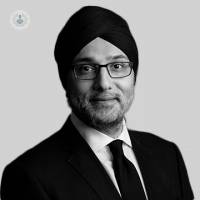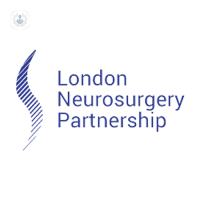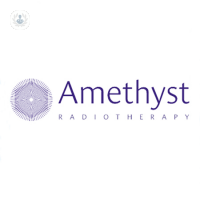What is a gamma knife?
A gamma knife is not, in fact, a physical ‘knife’ in the traditional sense of the word, but is a precise form of radiation therapy used to treat tumours, malformations, or nerves causing problems in the brain.
Gamma knife surgery is performed by a specialist neurosurgeon.

Why is gamma knife surgery performed?
Gamma knife surgery is also not ‘surgery’ in the typical sense of the word, but as its outcomes are similar to surgical procedures, it is named so. Gamma knife surgery is performed to treat tumours, blood vessel malformations, and conditions affecting the nerves. Gamma knife surgery can be used to treat:
- acoustic neuroma
- brain tumours
- paediatric brain tumours
- trigeminal neuralgia
- arteriovenous malformations
- certain types of tremor
Gamma knife surgery may also be used instead of a craniotomy, as it is especially useful for patients who do not have the option of a craniotomy open to them.
How is gamma knife surgery performed?
Gamma knife surgery is performed by first fitting a frame onto the head, and being positioned on a bed for treatment. Once everything is in place, the specialist will leave the room, just like they would during an MRI scan. You can still speak to them through the microphone in the room, and they can watch everything that is happening. You will then be moved into the ‘unit’ where the gamma knife procedure is carried out.
Radiation treatment is applied in high doses to very specific areas of the brain, making sure surrounding healthy tissue is not damaged. This radiation does not cause pain, and patients won’t feel anything during the treatment.
Gamma knife surgery is generally carried out over one session, though it may be necessary to have more. Sessions can last from 30 minutes to one hour and a half, though on some occasions they may be longer. Some sessions may be broken up into smaller parts, with the specialist positioning you again after each break.
Preparation for Gamma Knife surgery
Before gamma knife surgery, a CT scan will be performed, which will help to locate the exact area where the tumour or other malformation is positioned. If the gamma knife procedure is being performed because of a vascular condition, a test called an angiogram may be performed. In this test, a catheter is introduced into a blood vessel (usually in the groin), and a special type of dye is inserted which shows up on X-rays.
Before the procedure, you’ll also need to have the frame which holds your head in place fitted. This frame will be fixed to your head with pins, which may be uncomfortable, but not painful.
Aftercare
After the procedure is finished, you will be able to rest for a while in the clinic or hospital. This allows your doctor to monitor you and give you medication for pain or a headache, if you have one. Generally you will be allowed to leave the clinic on the same day or on the day after the procedure, but you should make sure someone is there to take you home or accompany you.
While radiation therapy is used in the treatment, radioactivity isn’t anything to worry about and you can be around others after the procedure. In the days following the procedure, you may have a headache, and you can take over-the-counter painkillers to help with the pain. Your doctor will arrange a follow-up appointment with you to see how well the treatment has worked.
How successful is Gamma Knife surgery?
The success rate of Gamma Knife surgery is dependent on precise patient selection, as with conventional neurosurgery. When a patient is carefully selected, the outcomes are highly favourable.
The efficacy of Gamma Knife surgery may be compromised if the criteria for patient selection are extended, leading to the consideration of patients who may not receive the same benefits as more ideal candidates.
If you have been recommended for Gamma Knife surgery, and want to find the best specialist for you, you can find specialists on the Top Doctors page.
05-25-2017 09-27-2023Gamma knife
Mr Neil Kitchen - Neurosurgery
Created on: 05-25-2017
Updated on: 09-27-2023
Edited by: Jay Staniland
What is a gamma knife?
A gamma knife is not, in fact, a physical ‘knife’ in the traditional sense of the word, but is a precise form of radiation therapy used to treat tumours, malformations, or nerves causing problems in the brain.
Gamma knife surgery is performed by a specialist neurosurgeon.

Why is gamma knife surgery performed?
Gamma knife surgery is also not ‘surgery’ in the typical sense of the word, but as its outcomes are similar to surgical procedures, it is named so. Gamma knife surgery is performed to treat tumours, blood vessel malformations, and conditions affecting the nerves. Gamma knife surgery can be used to treat:
- acoustic neuroma
- brain tumours
- paediatric brain tumours
- trigeminal neuralgia
- arteriovenous malformations
- certain types of tremor
Gamma knife surgery may also be used instead of a craniotomy, as it is especially useful for patients who do not have the option of a craniotomy open to them.
How is gamma knife surgery performed?
Gamma knife surgery is performed by first fitting a frame onto the head, and being positioned on a bed for treatment. Once everything is in place, the specialist will leave the room, just like they would during an MRI scan. You can still speak to them through the microphone in the room, and they can watch everything that is happening. You will then be moved into the ‘unit’ where the gamma knife procedure is carried out.
Radiation treatment is applied in high doses to very specific areas of the brain, making sure surrounding healthy tissue is not damaged. This radiation does not cause pain, and patients won’t feel anything during the treatment.
Gamma knife surgery is generally carried out over one session, though it may be necessary to have more. Sessions can last from 30 minutes to one hour and a half, though on some occasions they may be longer. Some sessions may be broken up into smaller parts, with the specialist positioning you again after each break.
Preparation for Gamma Knife surgery
Before gamma knife surgery, a CT scan will be performed, which will help to locate the exact area where the tumour or other malformation is positioned. If the gamma knife procedure is being performed because of a vascular condition, a test called an angiogram may be performed. In this test, a catheter is introduced into a blood vessel (usually in the groin), and a special type of dye is inserted which shows up on X-rays.
Before the procedure, you’ll also need to have the frame which holds your head in place fitted. This frame will be fixed to your head with pins, which may be uncomfortable, but not painful.
Aftercare
After the procedure is finished, you will be able to rest for a while in the clinic or hospital. This allows your doctor to monitor you and give you medication for pain or a headache, if you have one. Generally you will be allowed to leave the clinic on the same day or on the day after the procedure, but you should make sure someone is there to take you home or accompany you.
While radiation therapy is used in the treatment, radioactivity isn’t anything to worry about and you can be around others after the procedure. In the days following the procedure, you may have a headache, and you can take over-the-counter painkillers to help with the pain. Your doctor will arrange a follow-up appointment with you to see how well the treatment has worked.
How successful is Gamma Knife surgery?
The success rate of Gamma Knife surgery is dependent on precise patient selection, as with conventional neurosurgery. When a patient is carefully selected, the outcomes are highly favourable.
The efficacy of Gamma Knife surgery may be compromised if the criteria for patient selection are extended, leading to the consideration of patients who may not receive the same benefits as more ideal candidates.
If you have been recommended for Gamma Knife surgery, and want to find the best specialist for you, you can find specialists on the Top Doctors page.


An expert guide: What is Gamma Knife radiation therapy?
By Mr Neil Kitchen
2024-11-21
In this expert guide to Gamma Knife radiation therapy, leading consultant neurosurgeon Mr Neil Kitchen sheds light on the applications of this cutting-edge treatment. See more
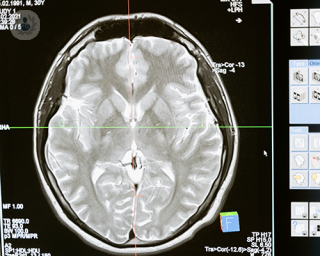

The new Vantage frame by Elekta: Increased precision and patient comfort during Gamma Knife radiosurgery treatments
By Mr Neil Kitchen
2024-11-19
The Vantage frame by Elekta is a new patient head frame used exclusively at the specialised Queen Square (Gamma Knife) Radiosurgery Centre in London that allows for superior imaging and treatment accuracy. Here to provide an expert insight into the new Vantage frame is Mr Neil Kitchen, distinguished Consultant Neurosurgeon and Medical Director at Queen Square (Gamma Knife) Radiosurgery Centre, London. See more
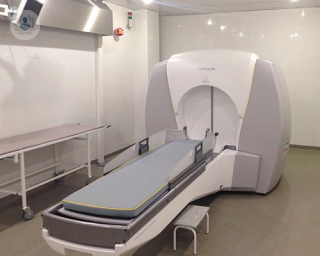

Gamma Knife stereotactic radiosurgery: an in-depth look into treatment for trigeminal neuralgia
By Mr Jonathan Hyam
2024-11-19
Despite its name, Gamma Knife isn't a knife, it is a form of radiation therapy. In our latest article, London-based leading consultant neurosurgeon Mr Jonahtna Hytam shares his expertise on the use of Gamma Knife stereotactic radiosurgery to treat trigeminal neuralgia. See more


Gamma Knife Radiosurgery: your questions answered
By Mr John Yianni
2024-11-18
Gamma Knife radiosurgery is a popular option used to treat brain tumours. Leading consultant neurosurgeon Mr John Yianni answers your commonly asked questions about the surgery, including how it works, its advantages over normal brain surgery and the recovery process. See more
Experts in Gamma knife
-
Mr Ranjeev Bhangoo
NeurosurgeryExpert in:
- Laser Interstitial Thermal Therapy (LITT)
- Meningioma
- Gamma knife
- CyberKnife
- Brain metastasis
- Brain tumour
-
Ms Mary Murphy
NeurosurgeryExpert in:
- Arteriovenous malformation
- Cavernoma
- Gamma knife
- Meningioma
- Vascular malformations
- Brain metastasis
-
Mr Jonathan Hyam
NeurosurgeryExpert in:
- Gamma knife
- Brain tumour
- Acoustic neuroma
- Trigeminal neuralgia
- Meningioma
- Brain metastasis
-
Mr Neil Kitchen
NeurosurgeryExpert in:
- Brain tumour
- Acoustic neuroma
- Cavernoma
- Gamma knife
- Trigeminal neuralgia
- Brain metastasis
-
Mr Patrick Grover
NeurosurgeryExpert in:
- Acoustic neuroma
- Arteriovenous malformation
- Brain tumour
- Cavernoma
- Gamma knife
- Meningioma
- See all

Alliance Medical Marylebone
Alliance Medical Marylebone
10-11 Bulstrode Place, London. W1U 2HX
No existe teléfono en el centro.
By using the telephone number provided by TOP DOCTORS, you automatically agree to let us use your phone number for statistical and commercial purposes. For further information, read our Privacy Policy
Top Doctors

London Neurosurgery Partnership (HCA)
London Neurosurgery Partnership (HCA)
78 Harley St, London W1G 7HJ
No existe teléfono en el centro.
By using the telephone number provided by TOP DOCTORS, you automatically agree to let us use your phone number for statistical and commercial purposes. For further information, read our Privacy Policy
Top Doctors

Amethyst: Thornbury Radiosurgery Centre
Amethyst: Thornbury Radiosurgery Centre
Thornbury Radiosurgery Centre, 312 Fulwood Rd, Sheffield, S10 3BR
No existe teléfono en el centro.
By using the telephone number provided by TOP DOCTORS, you automatically agree to let us use your phone number for statistical and commercial purposes. For further information, read our Privacy Policy
Top Doctors
-
Alliance Medical Marylebone
10-11 Bulstrode Place, London. W1U 2HX, Central LondonExpert in:
- Cardiology
- Diagnostic Imaging
- Ultrasound
- Gastroenterology
- Neurology
- Magnetic resonance
-
London Neurosurgery Partnership (HCA)
78 Harley St, London W1G 7HJ, W1G Marylebone LondonExpert in:
- Minimal access surgery (keyhole surgery)
- Neurological spinal surgery
- Back pain
- Neurosurgery
- Brain and spinal tumours
-
Amethyst: Thornbury Radiosurgery Centre
Thornbury Radiosurgery Centre, 312 Fulwood Rd, Sheffield, S10 3BR, SheffieldExpert in:
- Vascular Surgery
- Neurosurgery
- Neurology
- Medical Oncology
- Cancer Treatment
- Brain and spinal tumours
- See all
- Most viewed diseases, medical tests, and treatments
- Testicular ultrasound
- Lumbar herniated disc
- Breast ultrasound
- Spinal surgery
- Minimal access surgery (keyhole surgery)
- Parkinson's disease
- DEXA scan
- Ulnar nerve surgery
- Carpal tunnel surgery
- Carpal tunnel syndrome

